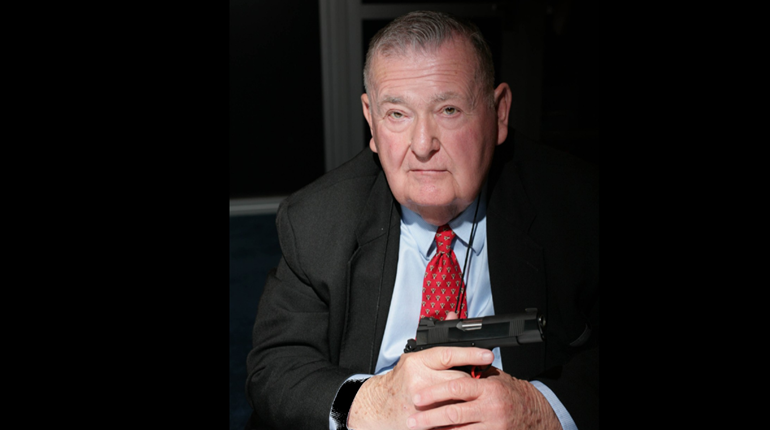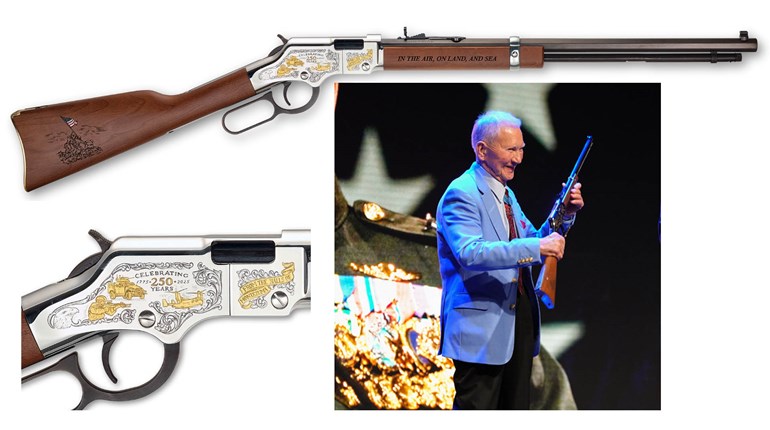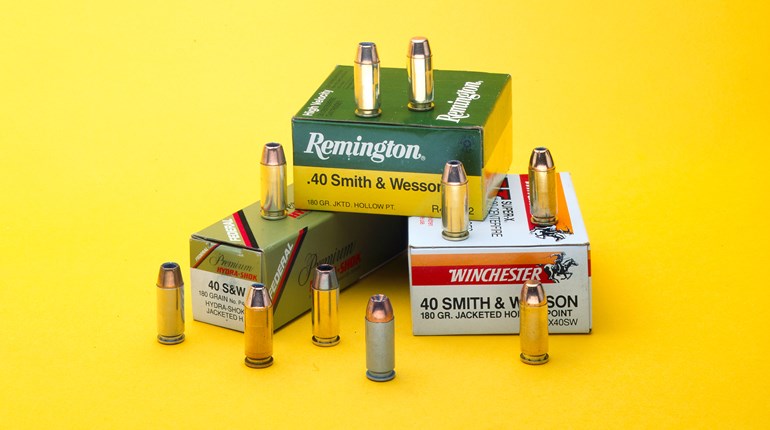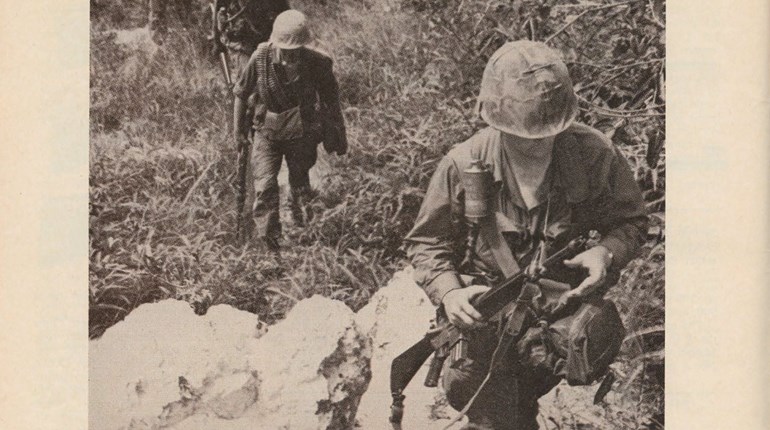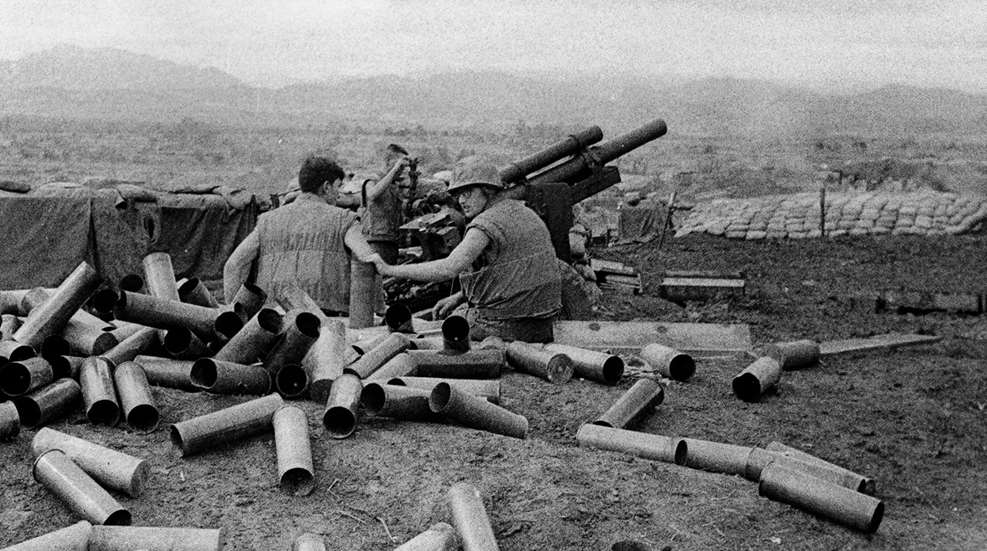
The American 105 mm howitzer was perhaps the most significant piece of mid-20th century (and beyond) field artillery. It ended up being used on both sides of many conflicts.
One hundred five millimeters converts to just a dab more than 4 inches for Yankee rulin’, but the dimension has enormous importance in gun history. It (one-OH-five) is the diameter of the bore of one of the most used—and effective—firearms in American military history. Conceived after the less-than-ideal performance of our field artillery in World War I, the 105 mm howitzer was developed in the 1930s and manufactured in the thousands by the 1940s. It was used in every war we have fought from World War II to date. In the American practice, for every three regiments of infantry, there was a regiment of 105 mm artillery. Each of them had 54 or more howitzers. The 105 mm howitzer needs a truck to pull it to a flat spot of land, but has a range of slightly more than 11,000 meters (6.8 miles) and a staggering array of ammunition. A versatile gun, the 105 can shoot over terrain features via a high angle of trajectory. After the many fronts of World War II, Korea, Vietnam, the Persian Gulf and other conflicts, the basic 105 mm howitzer earned the respect of those who defended us, as well as the fear of those who opposed us. It was—and still is—the American gun.
However, there is a recorded incident where the grand-old howitzer found itself firing those powerful shells at an enemy armed with the same 105s and shooting back. Neither adversary was American, but the irony of the almost forgotten battle where this unique situation developed requires a bit of history. In the late 1940s, the French military was struggling to rebuild after its defeat and the resulting occupation of France by the Germans. True enough, some Free French units and special-operations personnel fought gallantly during the latter European battles. They were largely equipped by the U.S. By the early 1950s, the French struggled to re-establish control over the several countries that made up the pre-World War II region called French Indochina. There was still a lot of gear in use that was American made, including those 105s.
By the end of 1953, the French had a modern army facing an advanced force of guerrillas that had no air force and little in the way of vehicles. They fought a relatively well-equipped army with rifles and machine guns. Called the Viet Minh, this force had its political origins in communist ideology and years of experience in guerrilla warfare. Eventually, Viet Minh patience drove the French into a series of outposts and enclaves along major roads and cities. This left the Viet Minh free to move at will in the countryside and mountains. It became common for the French to encounter Viet Minh with increasingly better weapons—even uniforms. In order to reverse this trend, the French resolved to establish a large base deep in the heavily forested jungle to the West. Then, on Nov. 20 and 21 1953, the French military dropped five battalions of elite paratroopers on an abandoned airstrip in the valley known as Dien Bien Phu.
It was a bold move. As days passed, the French fought off Viet Minh probes, repaired the airstrip to take C-47s and flew in reinforcements and heavier equipment. The heavy stuff included a number of—you guessed it—105 mm howitzers. By March of 1954, the French forces were behind barbed wire and in log/sandbag bunkers, smoothly re-supplied often by cargo aircraft. Then, on the night of March 15, the Viet Minh made a bolder move. It executed a classic night attack on the Northernmost outpost with infantry. Artillery supported the assault—fire from 105s the Viet Minh were not supposed to have.
Where did they get the 105 mm guns and ammo? The rounds came from an American factory and had been issued to a unit of the U.S. Army. It’s possible the ammo was once in the hands of a South Korean army outfit. In the first months of the Korean War, North Korean troops overwhelmed the unprepared South Korean army. Even hastily equipped American troops could not hold their own against the onslaught. More than a few 105 mm howitzer units were overrun and the guns captured. There’s considerable evidence the Red Chinese acquired them and eventually gave them to the Viet Minh.
Thus began a two-month-long Viet Minh campaign against the entrenched outpost that ended in a French surrender. A material factor in the Viet Minh success was the presence and skillful use of the 105s. They covered every infantry attack, but more importantly, destroyed the airfield. This made re-supplying by transport aircraft impossible. The use of military helicopters was new, so the only supply system was by parachute. The Viet Minh had a few anti-aircraft guns, which drove the re-supply planes higher and therefore spread out their drop zones. In the last weeks of the battle, supply drops often fell into Viet Minh hands. If the drop contained 105 mm shells, the enemy was more than willing to use them.
None of this should be viewed as criticism of the French 105 mm guns. They took a fearful toll of lives among the ranks of young Vietnamese infantry. The ironies of this battle go well beyond the curious use of American-made field howitzers by both French and Vietnamese. It all happened 70 years ago, and I am unsure what it proved.
But, it is certain that the 105 mm howitzer is superb fightin’ iron.












